Jim White’s Colorado & Southern Railroad
Jim’s layout is of the Colorado & Southern RR near Idaho Springs, right after it was formed in 1899. He was really avoiding anything about the twentieth century. It is in G-Scale, 1:22.5. The details are not always historically accurate, but they are at least historically plausible.
Jim moved to Colorado in December 2002. He really had wanted a garden railroad, but the lot slopes in his yard were 20%-30%. That made the grades too steep, so he settled for a small railroad in the basement. Jim spent the year 2003 cleaning out an area in the basement, paneling the bare walls, and upgrading the lighting. He built 7 tables, each 4 X 8 feet, and assembled them to make a rectangle, with an open area in the middle. This made the whole layout 16 feet by 20 feet. One of the objectives was to have a walk-around layout, where everything was reachable (within 4 feet) of the edge. He planned for the backdrop to hide the open area in the middle.
All of the locomotives are battery-powered, with radio-controlled DCC and Sound. Jim has not had to clean the tracks since he first laid them in 2004!
One of the fun aspects of large-scale models is the ability to work with details. All of his locomotives have an engineer and a fireman, and all of the passenger cars have passengers (gotta’ watch out for revenue). Another nice part is there are almost never any derailments — unless a train runs through the frog of a switch that is set the wrong way.
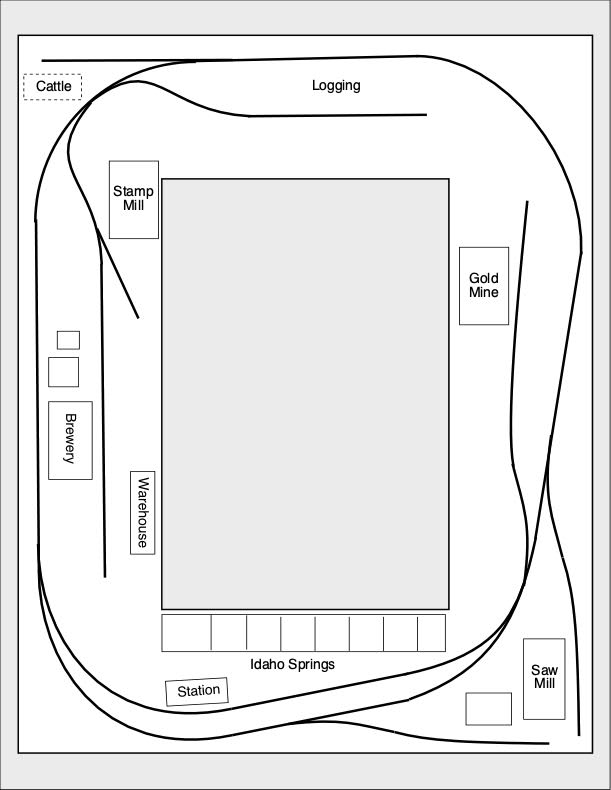
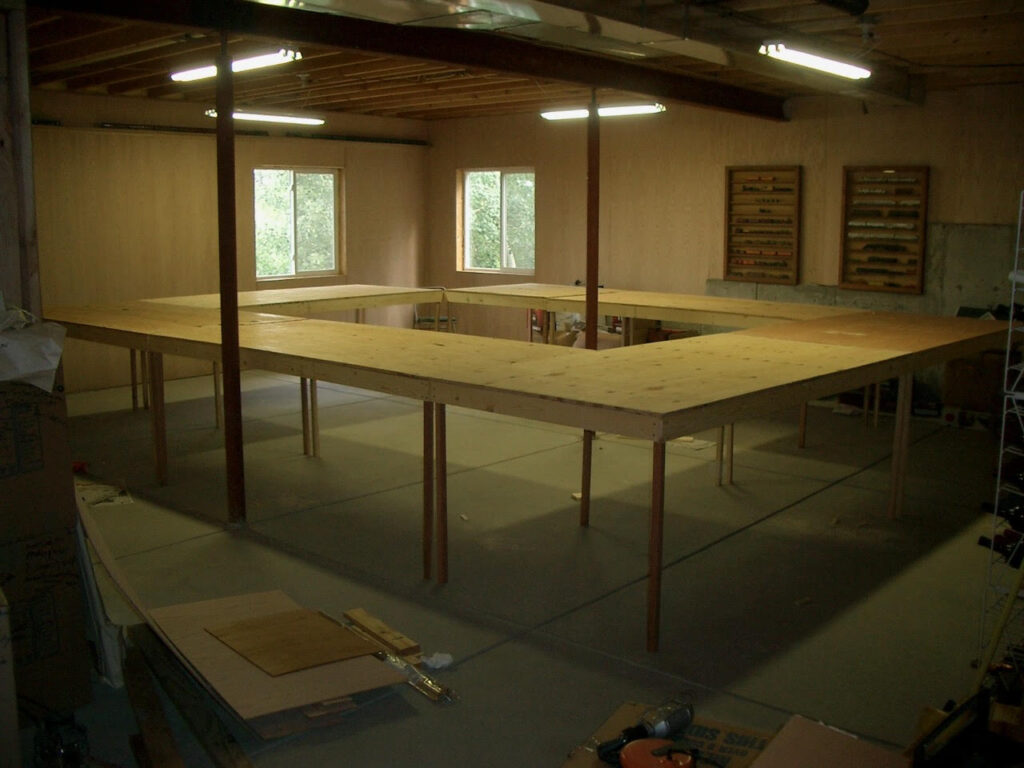
Jim has gradually been building rolling stock and scenery. It is now to the point that he is now just adding miscellaneous details.

Jim has his priorities. The first industry on the railroad was a brewery. There is a brewery called Tommyknockers in Idaho Springs (that makes some pretty good beer); it was established in 1994, so he made it “plausible” for 1884, so it could be on his railroad.
The artist who does all the marketing artwork for the brewery is a neighbor. She gave Jim the artwork for their logo, and he made a billboard reefer — again historically “plausible” rather than accurate.

The center of activity is the town of Idaho Springs. The main street is a collection of buildings along Miner Street, which today is the historical district. Most of the buildings on Jim’s layout are models of actual buildings in town. They are mostly built from heavily modified kits. Here are a couple of views from each end of town:

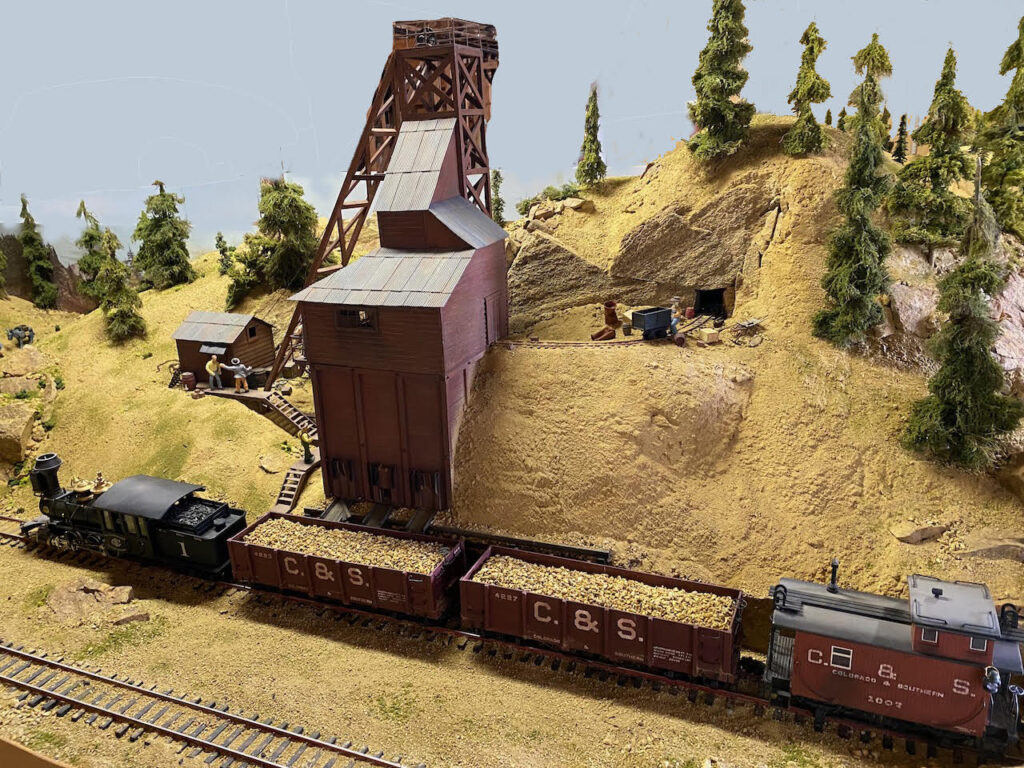
Of course, you can’t have the Colorado & Southern without a gold mine. Jim’s is a model of a mine that still exists, although in much worse condition than it was 20 years ago when he got all the dimensions. It is just west of town. His version is actually a mirror image, and has a few details changed to make it fit in the area on the layout. It is scratch-built — as are the gondolas and locomotive in the picture.

And, of course, there is not much fun in having a mine on the railroad unless you have some place to ship the ore. So, Jim built a stamp mill. It is inspired by the Argo Mill in Idaho Springs, but it is much smaller — although it is still 4 feet wide and 3 feet deep and 3 feet tall. It is also scratch built.
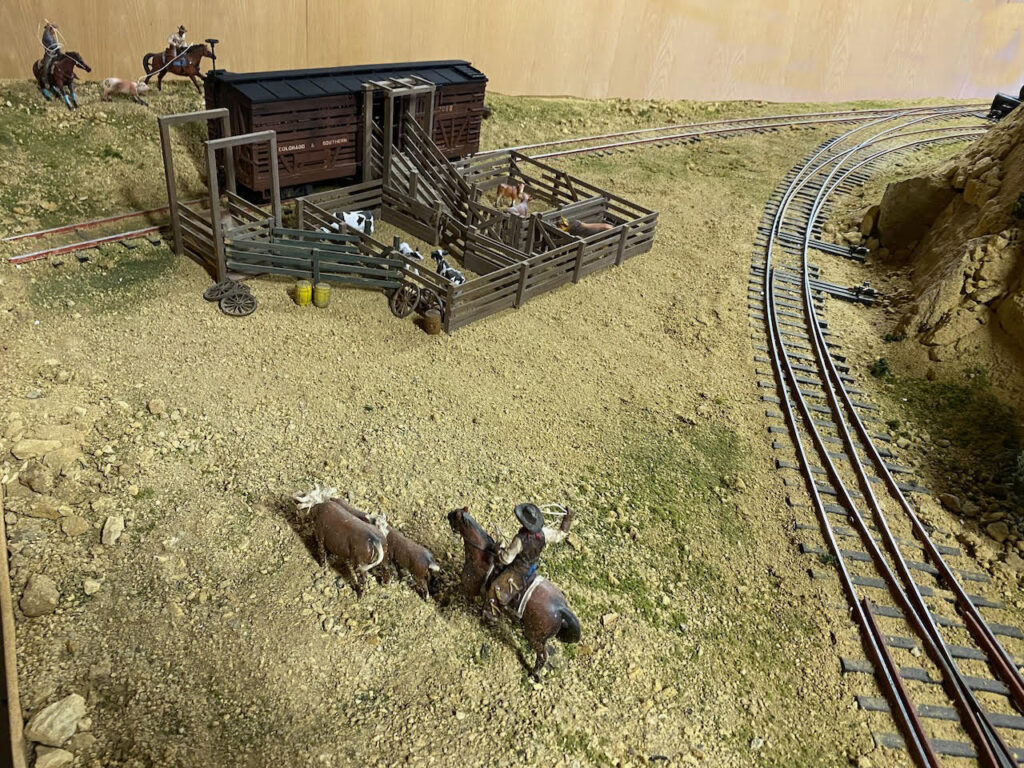
Jim already had a stock car, so he needed a cattle pen for loading it.
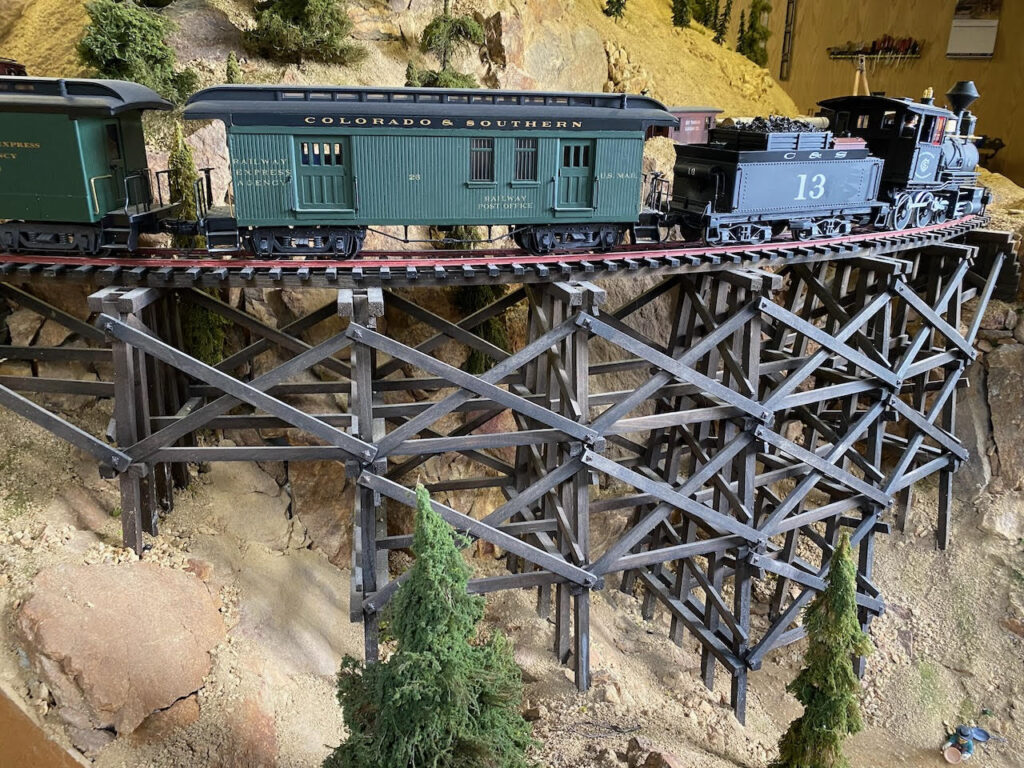
One of the design criteria was to have a trestle, so he cut out a corner of the layout benchwork to put in a canyon for the trestle.